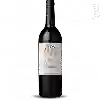
Winery Baron Philippe de RothschildRosé
In the mouth this pink wine is a with a nice freshness.
This wine generally goes well with appetizers and snacks, lean fish or shellfish.
Taste structure of the Rosé from the Winery Baron Philippe de Rothschild
Light | Bold | |
Dry | Sweet | |
Soft | Acidic |
In the mouth the Rosé of Winery Baron Philippe de Rothschild in the region of Central Valley is a with a nice freshness.
Food and wine pairings with Rosé
Pairings that work perfectly with Rosé
Original food and wine pairings with Rosé
The Rosé of Winery Baron Philippe de Rothschild matches generally quite well with dishes of shellfish, spicy food or mature and hard cheese such as recipes of squid rings with tomato, dab with coconut milk or cannelloni with zucchini.
Details and technical informations about Winery Baron Philippe de Rothschild's Rosé.
Discover the grape variety: Madeleine-Sylvaner
Of unknown origin, it is nevertheless a very old vitis vinifera cultivated and used as both a table grape and a wine grape. It is somewhat similar to the Madeleine angevine and is not related to the Sylvaner. It can be found in the United States, England, Canada, Germany, Switzerland, etc. and is virtually unknown in France.
Last vintages of this wine
The best vintages of Rosé from Winery Baron Philippe de Rothschild are 2021, 0
Informations about the Winery Baron Philippe de Rothschild
The Winery Baron Philippe de Rothschild is one of wineries to follow in Maule Valley.. It offers 184 wines for sale in the of Maule Valley to come and discover on site or to buy online.
The wine region of Maule Valley
Maule Valley is the largest wine-producing region in Chile other than the Central Valley, of which it is a Part. It has 75,000 acres (30,000ha) under Vine, and has traditionally been associated with quantity rather than quality. But this is rapidly changing – the bulk-producing Pais vine is gradually being replaced with more international varieties such as Cabernet Sauvignon and Carmenère, and careful winemaking practices are being employed to make some world-class red wines from old-vine Carignan. The Central Valley itself runs between the Andes and the Coastal Mountains from the Chilean capital of Santiago in the North to the up-and-coming region of Bío Bío in the South.
The wine region of Central Valley
The Central Valley (El Valle Central) of Chile is one of the most important wine-producing areas in South America in terms of Volume. It is also one of the largest wine regions, stretching from the Maipo Valley (just south of Santiago) to the southern end of the Maule Valley. This is a distance of almost 250 miles (400km) and covers a number of Climate types. The Central Valley wine region is easily (and often) confused with the geological Central Valley, which runs north–south for more than 620 miles (1000km) between the Pacific Coastal Ranges and the lower Andes.
The word of the wine: Vinification of sweet wines
Moelleux and liquoreux wines are characterized by the presence of residual sugars (natural sugar of the grape), not transformed into alcohol under the effect of yeasts. The fermentation is stopped by cold and by the addition of sulphur dioxide (sulphur).














